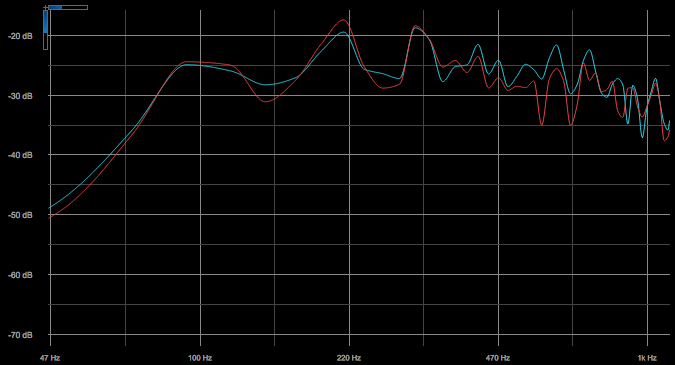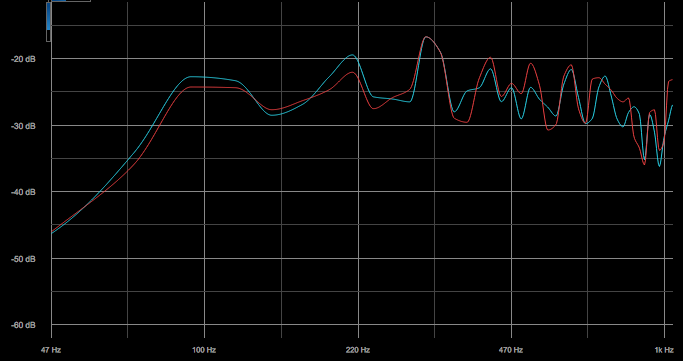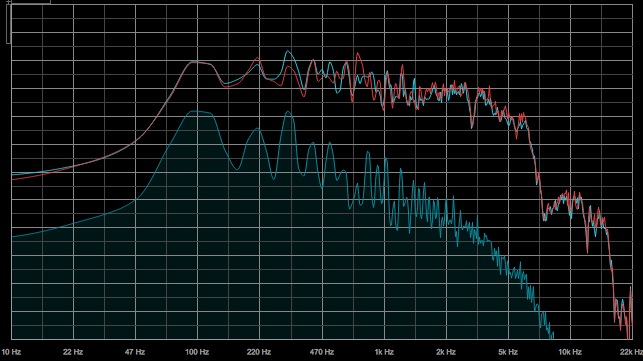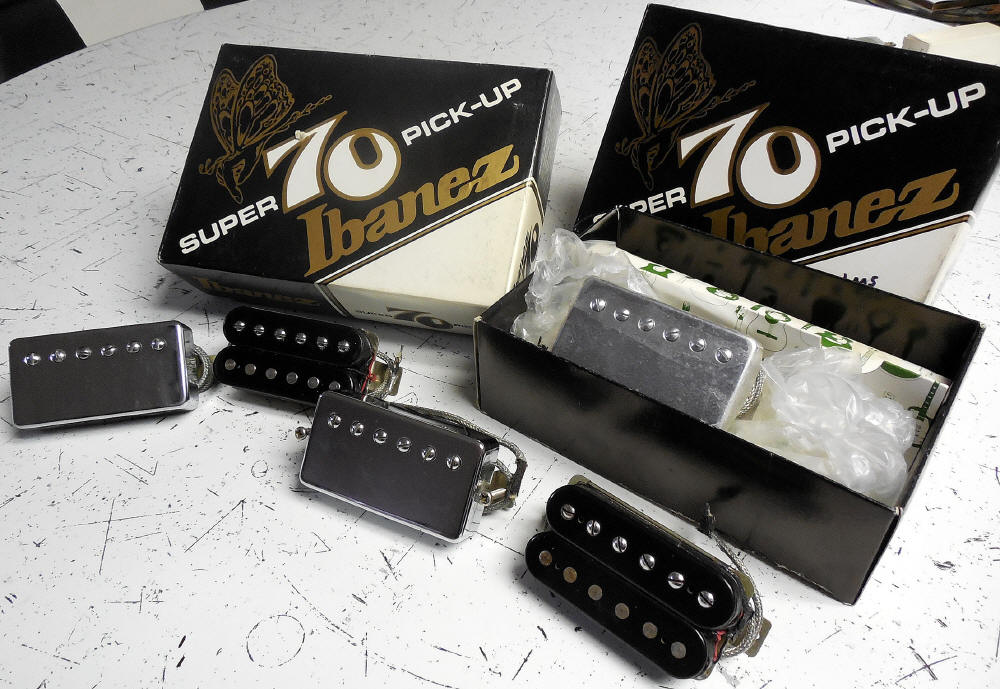| Most of you know that we
have spent years building guitar pickups. One of the many truths we've
uncovered is that specifications are only part of the answer regarding tone.
The pickup is part of the "system", and talking about resistance, or "Ks
output" -- what you always see on eBay and forums -- is an easy way to
compare pickups, but we recommend you don't get hung up on it.
Here is an example of the analysis we routinely complete: The graphic below
is of a standard A power chord played on both the Destroyer and the
Explorer.
Warning: Do
not get hung-up on these plots. They are presented for informational
purposes only and the ultimate test is how the guitar sounds.
John played the chords ten times
each, and these are the averages. The pick was an Dunlop Jazz III.
(Eddie has used a lot of different picks over the years...click
here to see some of them.) Both guitars were strung with fresh Ernie Ball
Pink Slinkys (9-42) and setup with the action exactly the same. The
pickup heights were exactly the same. Yes, we used a George L's cord.
In the plot below the Ibanez is represented by the
Blue Line, and the Epiphone is represented by the Red Line. Generally, the
Epiphone showed a response that was
lower at approximately 150 Hz, higher at 220 Hz, and generally lower up to
about 1k Hz.. However, both are very similar above 1k Hz.
What we might expect with this response is that the Ibanez may have more low
end, but it might be hard to hear. The bumps in the 500 Hz range would make
us think the Destroyer would be a little boomier, but we like to mix with our ears and not with
our eyes.
|
 |
|
For comparison, the plot below features the same
Destroyer -- shown as the Blue Line -- vs. our "Ace Frehley" 1977 Les
Paul -- shown as the Red Line. The LP is stock except for the
ancient Dimarzio PAFs installed. OK -- Ace used a Super Distortion
in the bridge position, but we like the way the PAF sounds.
Note the similar bumps at about 220 Hz, and the Les Paul's
has a little more girth in the 750-1000 Hz range. The Les Paul also has a
little advantage in the upper range, but it is really hard to see.
For a quick comparison, the Explorer is displaying a little more low end
than the Les Paul, but it doesn't sound that way. It is a really good-sounding
Les Paul, by the way...and it probably weighs 20 pounds!
|
|
 |
|
For comparison, the plot below features the same
Les Paul -- shown as the Blue Line -- vs. our Fender Yngwie Malmsteen
Stratocaster-- shown as the Red Line. The Yngwie is killer, and
sounds like it should.
Note how similar the plots are for both guitars with
an A power chord. The Strat is a little lower in the 350 Hz range,
and a little higher in the 750 Hz range. The Les Paul sustains
forever, and you can see it in this graphic. The blue line below
the two lines shows the gradual decay of the Les Paul while the Yngwie
Strat has already gone silent. See -- these plots just don't tell
you the entire story, but they are good for providing data points. |
|

|
|
Beware of a lot of this pseudo-scientific stuff --
the true test is how the guitars sound. Once we finished capturing
graphics, we plugged both guitars into our old Marshall JMP and
started playing - not at the same time, of course. What was immediately evident was that the
Epiphone had a boomy, uncontrolled low end the Ibanez didn't have.
This tone would be consistent with a lot of the recent Far East pickups
we've tried. While the Epiphone didn't sound bad, we all concluded
it was just different. Based on the analysis we did on the guitars, we
shouldn't see this but it was kind of expected due to the stock pickups.
We opened up the Epi and did took some measurements
of the bridge pickup and found some interesting things. Based on
these measurements, we decided to compare them to our Destroyer's pickups.
Bottom Line:
Clearly the Epiphone needs some new pickups. What pickup should we
use as a baseline? We're thinking Super 70s, the pickup found in
the stock Ibanez Destroyer!
|
|
|
|
|
|
|
|
 |
Here is a small, small portion of our Maxon/Super 70
collection. From left to right we have a January 1974 Maxon, a
September 1975 Maxon (No Cover), a September 1974 Maxon, an August 1976
Super 70 (No Cover), and two February 1977 Super 70s in their original
boxes with plastic on their covers. We also have a 1975 Ibanez
Rocket Roll Senior (Flying V) with Maxons used for the test.
It is important to note that there were a number of
different configurations of this pickup produced over the years. The ones we
chose for our test had to have the same build type: Vintage style
long-leg base, two-conductor braided lead, and a cover. Note that the ones
without the cover in the photo did have covers but they were removed at
some point.
These are pretty hard to come by, and the ones you do
get are normally parted-out of guitars. Many found on eBay have
been modified, rewound, or just abused....like a lot of the old Gibson PAFs you see on there. All of these pickups are in original
condition and we believe they provide a true record of how these pickups
sounded back in 1977/78.
Our plan is the measure all of these and establish a
good baseline for building a pickup to make our Epiphone Explorer sound
more like the Ibanez Destroyer. |
|
